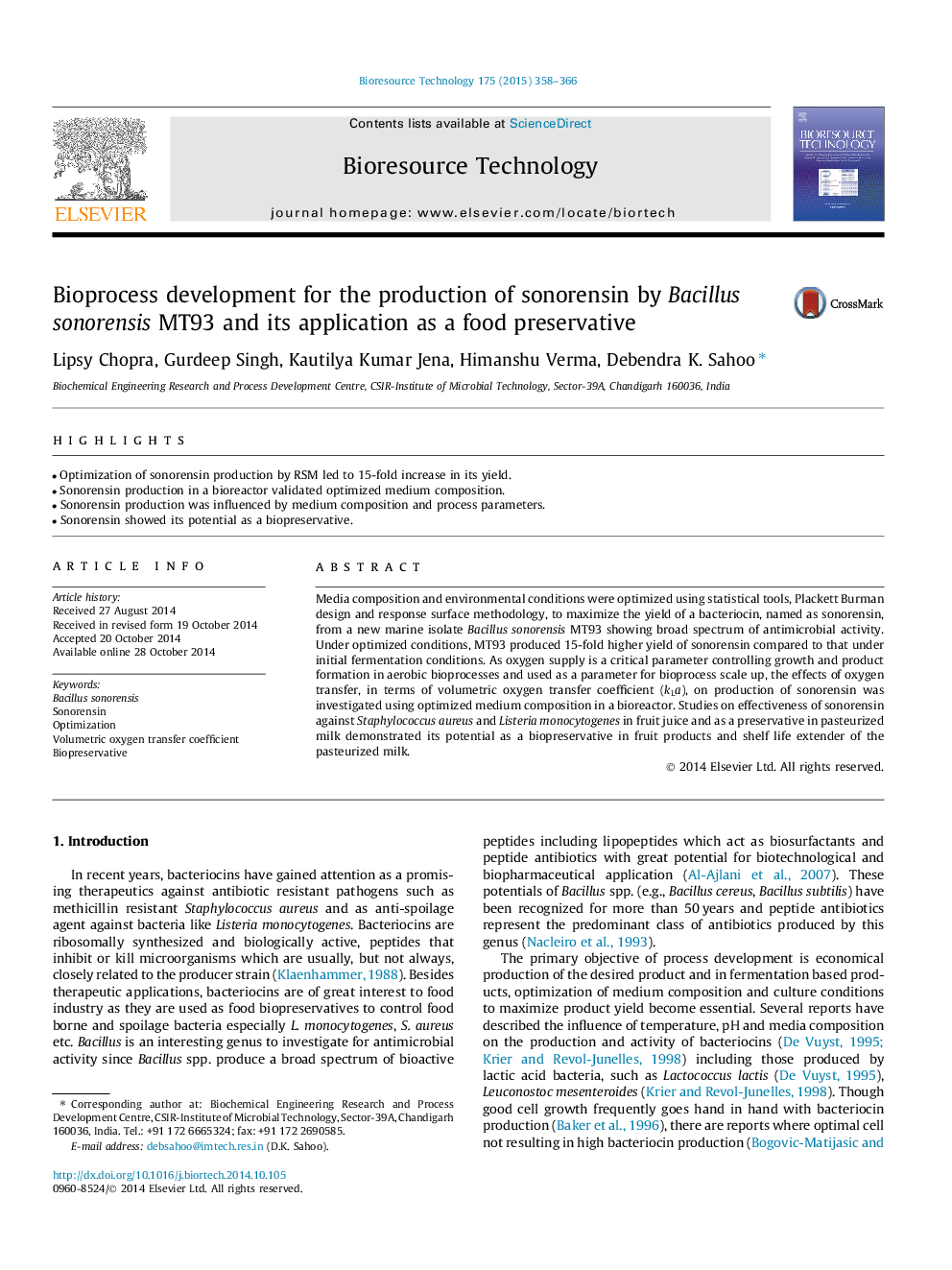| Article ID | Journal | Published Year | Pages | File Type |
|---|---|---|---|---|
| 680314 | Bioresource Technology | 2015 | 9 Pages |
•Optimization of sonorensin production by RSM led to 15-fold increase in its yield.•Sonorensin production in a bioreactor validated optimized medium composition.•Sonorensin production was influenced by medium composition and process parameters.•Sonorensin showed its potential as a biopreservative.
Media composition and environmental conditions were optimized using statistical tools, Plackett Burman design and response surface methodology, to maximize the yield of a bacteriocin, named as sonorensin, from a new marine isolate Bacillus sonorensis MT93 showing broad spectrum of antimicrobial activity. Under optimized conditions, MT93 produced 15-fold higher yield of sonorensin compared to that under initial fermentation conditions. As oxygen supply is a critical parameter controlling growth and product formation in aerobic bioprocesses and used as a parameter for bioprocess scale up, the effects of oxygen transfer, in terms of volumetric oxygen transfer coefficient (kLa), on production of sonorensin was investigated using optimized medium composition in a bioreactor. Studies on effectiveness of sonorensin against Staphylococcus aureus and Listeria monocytogenes in fruit juice and as a preservative in pasteurized milk demonstrated its potential as a biopreservative in fruit products and shelf life extender of the pasteurized milk.
